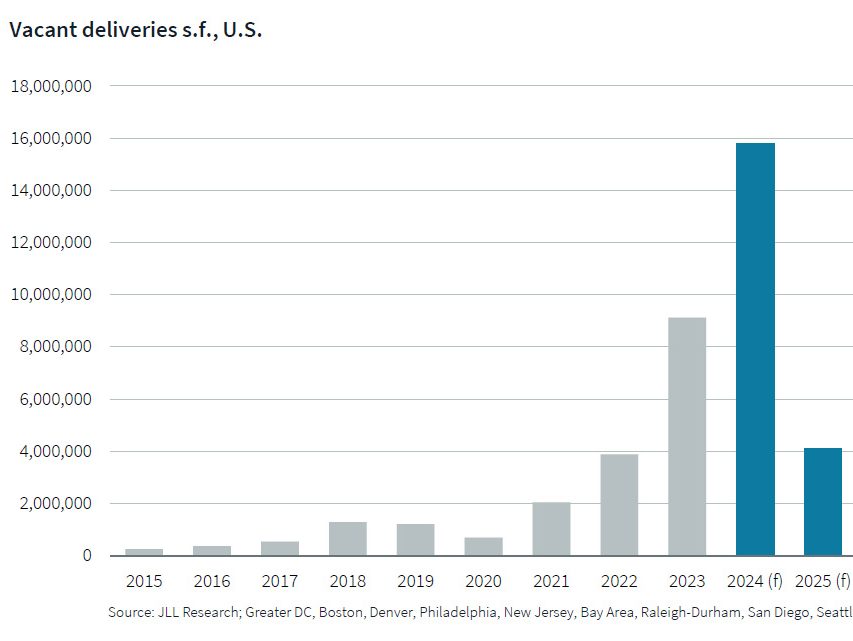Q&A with Shekar Narasimhan: Government and Real Estate
Beekman Advisors managing partner Shekar Narasimhan spoke with editor-in-chief Suzann D. Silverman about the real estate and real estate finance markets. Here are his thoughts on government policy and real estate.
 Beekman Advisors managing partner Shekar Narasimhan spoke in late December with editor-in-chief Suzann D. Silverman about the real estate and real estate finance markets. An icon in commercial and multi-family real estate circles, Narasimhan has spent the past 30 years in the industry, working in nonprofits, property management and real estate development before moving into banking and the mortgage business. In December 1997, he took WMF Group public, selling it to Prudential Mortgage Capital Co. in 2000. In 2003, he started Beekman Advisors, which serves as a strategic advisor to real estate firms in the United States and a principal investor in India. What follows are his thoughts on government policies. For his views on the real estate market, see the Visionary Q&A “Building the Firm of the Future” in the print or digital editions of CPE’s February issue, also available by clicking here.
Beekman Advisors managing partner Shekar Narasimhan spoke in late December with editor-in-chief Suzann D. Silverman about the real estate and real estate finance markets. An icon in commercial and multi-family real estate circles, Narasimhan has spent the past 30 years in the industry, working in nonprofits, property management and real estate development before moving into banking and the mortgage business. In December 1997, he took WMF Group public, selling it to Prudential Mortgage Capital Co. in 2000. In 2003, he started Beekman Advisors, which serves as a strategic advisor to real estate firms in the United States and a principal investor in India. What follows are his thoughts on government policies. For his views on the real estate market, see the Visionary Q&A “Building the Firm of the Future” in the print or digital editions of CPE’s February issue, also available by clicking here.
Q: Among government initiatives, what do you agree with and what are you concerned about as it relates to real estate?
A: What had to be done was done with TARP. … Many years from now, when all the histrionics are over, people will gauge that it was both necessary to have done it when it was done, and then it was executed actually rather well in a crisis; and No. 2, that the net result was that it did save the system at the lowest possible cost that one can imagine. … The biggest negative is the government has introduced over the last several years a high degree of uncertainty—uncertainty about how you’re going to get taxed, how much intervention there’s going to be, which sectors of the economy, of the marketplace it will support or not support. The more uncertainty there is in the system about what government policy is going to look like, what tax policy is going to look like, where government intervention may or may not occur and to what degree, the less it is desirable for someone to make a long-term investment. And the difference between real estate generally as an asset class and most other asset classes is that we’re making pretty long-term commitments. …
I would argue that the support for the financial system, the conservatorship of the GSEs, the introduction of TARP, the stress testing of the banks, the getting the plumbing of the system right, the re-start of securitization—all of these are results of actions that, when we look back upon them in later days, we’ll say, “You know what? There was a cohesion here. Yeah, it might have been done by bootstraps. But at the end of the day people did what they were supposed to do, and our system actually worked.”
The flip side is that what happened during the period of extraordinary growth is there was excessive spending by everybody—the federal government, the state governments and the local governments. And you look at the budget deficits, and you start to wonder how could they have done that. That was pretty profligate. When you make money, you’re supposed to also save money. Nobody did. The federal government didn’t, state didn’t, local didn’t, the household didn’t, and most companies didn’t either, by the way. So we all participated in this period of extraordinary consumption for it looks like probably close to a decade and a half. And then it came back home to roost. …
I would suggest that the biggest thing we have to think about (regarding) policy and government in the future … is where is the job growth going to come from, in what sectors and what markets, and for what reason. … In real estate, we are heavily dependent upon the fact that there are jobs being created and workspace is needed and housing is needed. Otherwise, we don’t have work to do.
Q: Do you think we have reason to fear the outcome of the GSE debate?
A: Well, of course we do. On the other hand, we probably don’t for reasons that are more obtuse. We should fear it because it could lead to a massive disruption in capital flows in one sector of commercial real estate—specifically multi-family housing, which to some extent has benefited and been propped up by the presence of the GSEs, unlike retail, industrial and office, as an example, and hospitality. So we do have something to fear.
But on the other side, the good news is that multi-family—and I’m fond of saying this—is very much part of the solution and not part of the problem. And the reason is, statistically multi-family loans have outperformed—by the GSEs by the way, Fannie and Freddie—any other types of loans in the ABS as well as the commercial real estate factor. And the GSE books have therefore held up better, operated better, functioned better. So there’s a startlingly good reason to say, “Hey (to policymakers) “that one thing over there that works, please don’t screw it up.” There’s a really good argument here. I’m not sure if rationality (will) prevail … but nevertheless it is a very strong argument.
The second thing is that it is where housing is going. We are beginning to see the formation of a real renter nation now. We had 68 percent, 69 percent homeownership—it’s already down by several points. Some statistics say that for every million households that’s a 1 percent reduction in homeownership. It’s going to be hard to see how homeownership, unless it becomes again more housing of choice as opposed to a piggybank, comes back into vogue and goes back into those high percentages.
So we need renters, we need rental housing, we need institutional rental housing, we need financing. And good news: It’s worked. If we try not to screw it up and really continue it in a form that makes sense, while keeping the role—perhaps changing the role of government through the GSE vis-à-vis this—we’ll be fine. But I would be very watchful, because I see the temptation to say, “It works, so make it fully private.” Or, “It works, then make it fully government.” And the answer is probably right in the middle, and it’s a complicated answer, and I hope people even in these very polarized political times will find a way to think about these complex issues and come up with the right solution.
Q: You’ve recently said the FHA insurance program has worked for the multi-family sector for many years. Do you think that can be replicated for the commercial real estate sector? And in general how can we boost capital availability for the commercial real estate industry?
A: The big interesting thing about FHA is that it is completely unknown and extremely sleepy when it’s not needed, and then it becomes huge and gigantic when it is needed. I would suggest to you that’s exactly what we want of it. … In 2006, the FHA constituted in single-family less than 4 percent of the total market. In multi-family it constituted even less. We were doing $2.5 billion to $3.5 billion of loans insured by FHA, whether they were construction loans or rehab loans. Guess what happened in the last year? It went in the single-family business from 4 percent to 35 percent, and in the multi-family business, it’s 20 percent of the market. So it quadrupled. Fannie and Freddie’s total volumes have dropped because the private market has almost disappeared, and FHA skyrocketed. It’s exactly what we want. … It’s very inefficient, it’s very cumbersome, it’s got very limited programs, it delivers them as best as it can under the circumstances, but when it’s needed, when everything else has fallen apart and doesn’t exist and you need a source of capital for this, that’s where you go. …
Now, I believe—and this is not going to be astoundingly met with approval by most of the people in the commercial real estate arena—that that’s what the rest of the industry needs as well, as a backstop. I know we love to hate the government … but if you thought about what you need as a backstop for values, how do you prevent things from going not just below replacement cost, not just into obsolescence, but how do you prevent the spiraling down of values when capital disappears from a market, which we just saw and saw in the early ‘90s as well? You’ve got to have a backstop. You’ve got to have one place where there’s catastrophic intervention that says, “We’re going to allow this to happen because that’s the market and that’s reality, but we’re going to put some kind of floor underneath it, and here’s the FHA.”
To me, how this can happen potentially is first the FHA has to change and become more efficient. That’s not a bad idea; that’s a good idea. The second is, it doesn’t have to become much more of the market in my view. If it had 5 or 10 or 15 percent of the market at all times, that’d be great, and in really bad times 20 percent—wow. It puts the floor underneath the market, it provides a certain standardization and influence.
The way this can happen in CRE is first, we look at the fact that housing and healthcare and commercial development are now part of something—whether it’s transit-oriented or it’s urban friendly, it’s a great idea to do them together and not think of all of these things as segregated. We’re trying now to build neighborhoods, and it’s an amazing concept. These things actually coexist. We underwrite them as though they are completely independent and unrelated to each other. What if we started to underwrite a new mixed-use model for development, and the FHA could actually insure that? We know that people will say, “Well, let’s underwrite the commercial component this way and the multi-family this way and the hospitality this way and the industrial that way.” But somehow we should be able to build a model that (allows the) government (to) provide a certain level of insurance. Perhaps it does it with risk-sharing partners. … I would slowly ease them into it so that at the appropriate time and if needed that insurance could be available for commercial property development as well, but in limited quantities, probably delivered with great study and with deliberation, and in quantities that were relatively limited. But still, a catastrophic backstop.
Q: Interesting. And the idea of treating the mixed use as a single unit is interesting. Oftentimes, you’ve got different developers, different investors, different partners, and they are treated very differently.
A: Right, but if I can find one parcel and I’m going to build all these things on it and I can see how occupying the housing unit may actually benefit the retail center, which might actually help me with the office and might make it greener and more affordable—if I could actually look at all those components together, perhaps I could come up with an insurance program that enables debt financing so it’s done in a more efficient manner. That would be a great revolution. They’re thinking about it. It’s a logical step, and it seems to me that’s the way very carefully an agency like that treads into this arena. And then it may lead to more things. Who knows?
Q: What about the low-income-housing tax credit program? We’ve heard there’ve been some suggestions of pushing it off the table. Are you concerned about the outcome for affordable as well as working class housing?
A: I don’t think it’s off the table. I think it’s absolutely still alive. It’s being used across the country. It is developing housing. It’s right now almost the only source of new construction of multi-family out there. But we live—and I’m going to make this comment, by the way, about the debt markets as well—in what I would call a highly bifurcated market. Some things are really, really good, and everything else is really, really bad.
What happens when you misprice risk across the spectrum to begin with is that you’ll misprice the risk for a long period of time because you’re looking always in the rearview mirror. What I mean by that is, a property in an urban infill location of a certain size, done by a certain kind of developer—100 people will want to do that deal. And the same kind of property, perhaps build with the same quality, by perhaps the same developer, in a significantly less desirable location—i.e., a second-tier city or an older suburb—will have no interest whatsoever. We’re seeing that bifurcation occur with equity capital and debt capital, and it’s the way markets tend to behave. They tend to all rush into the perceived safest place and rush out of everything else. But that cascading effect is having a very dramatic effect, in my view, on the perceptions of risk that is completely not borne out by the facts. With LIHTC today, you get a 60-unit property in an infill location. If you had it in San Francisco, (you’d have) five bidders paying you top dollar: 85, 90 cents. You take that same thing and move it to Merced in an inner-ring suburb, and you will be at 75 cents and you may get one bid. Same deal. And you go further out and you’ll get zero bids. And that, by the way, is exactly what’s going on in the debt markets as well. Smaller loans, second-tier markets, more industry, less diversified are being completely excluded from the re-entry of the capital markets today.
I think it’ll change as risk perception changes. And by the way, I’m not arguing. We used to misprice risk in the sense that we said all loans everywhere should be the same price—it doesn’t really matter anymore. That makes no sense either, right? Why should a 30-year, fixed-rate, single-family mortgage be priced the same in location A and location B, with two different borrowers? One would assume that some perception of risk and value are different. But the fact that one is unavailable and the other is available is wrong also.
What’s the biggest threat to tax credits? Actually, two funny things—only because they’re obvious. You have to have profits to use credits, so you need companies that generate profits. It can’t just be about CRA. Even if it is about CRA, it has to be about that entity being able to use the credits—i.e., having profits. So the downswing on credits was overdependence on a very small number of players: Fannie and Freddie, to be exact. They exit, there’s a big vacuum, and then there’s not enough profit in the system, so the whole credit market was disadvantaged. Profits re-emerged, the same institutions are back, but there’s a bifurcated market. Long run, if we think about it, there will be a re-entry and it will, again, right itself. It just takes a period of time and correction.
But the second slightly funny part to me is, the really big threat to tax credits is tax rates. Who knows if this will ever happen or could ever happen, but if we actually moved to eliminating credits and lowering tax rates dramatically, that would be the biggest threat to credits, because credits work because of where the tax rates are. And if you dramatically lowered tax rates, you could easily argue, “Why do I need credits now, I’ve got a fairer tax system; I collect as much tax revenue and the tax form doesn’t require 600,000 accountants to prepare it for all of us. So there is a long-term threat, but it’s a threat not just to low-income-housing tax credits—to, I think, credits in all forms.







You must be logged in to post a comment.